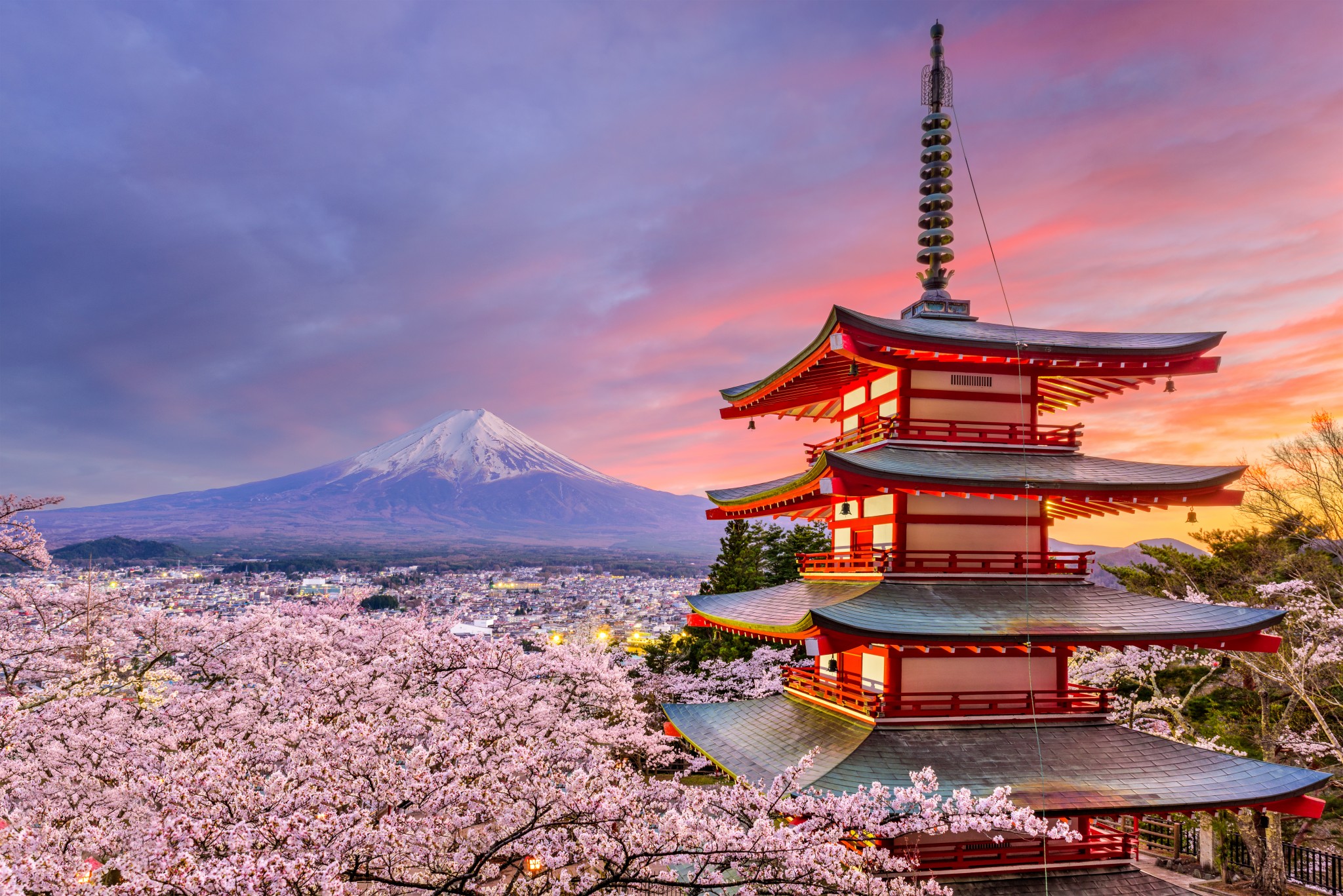
Japan, a nation steeped in ancient traditions and futuristic innovation, beckons travelers with its captivating blend of beauty, culture, and culinary delights. From the neon-lit streets of Tokyo to the serene temples of Kyoto and the snow-capped peaks of the Japanese Alps, Japan offers an unforgettable experience for every type of adventurer. This comprehensive guide will equip you with the knowledge you need to plan your dream trip to the Land of the Rising Sun, ensuring a smooth, enriching, and truly memorable journey.
1. Unveiling the Allure: Japan’s Top Attractions
Japan’s diverse landscape and rich history have cultivated a wealth of attractions, each offering a unique glimpse into the country’s soul. Here are some must-see destinations:

Related Articles about Journey to the Land of the Rising Sun: Your Comprehensive Guide to Traveling in Japan:
- Singapore: A Kaleidoscope of Culture, Innovation, and Natural Beauty
- Poland: A Journey Through History, Culture, and Untamed Beauty
- Chile: A Tapestry of Extremes and Unforgettable Stays – Your Ultimate Travel Guide
- Kenya: Where Wildlife Roams Free and History Whispers Through the Savannah
- Dubai: A Glimpse into the Future, Rooted in Tradition – Your Ultimate Travel Guide
Tokyo: A Metropolis of Contrasts
- Shibuya Crossing: The world’s busiest intersection, a spectacle of pedestrian flow and iconic imagery.
- Harajuku: A haven for youth fashion, street style, and vibrant energy.
- Senso-ji Temple: Tokyo’s oldest temple, a historic landmark in the Asakusa district.
- Tokyo Skytree: Offering panoramic views of the city from its towering observation decks.
- Imperial Palace East Garden: A tranquil oasis in the heart of Tokyo, showcasing the former site of Edo Castle.
- Ghibli Museum (Mitaka): A whimsical museum dedicated to the works of Studio Ghibli, home to beloved animated films. (Requires advance ticket purchase)
- Shinjuku Gyoen National Garden: A beautiful oasis with English, French, and Japanese gardens.
- Akihabara: Known as "Electric Town," it is a hub for anime, manga, and electronics.

Kyoto: The Ancient Capital of Tradition
- Kinkaku-ji (Golden Pavilion): A dazzling Zen Buddhist temple covered in gold leaf.
- Fushimi Inari-taisha Shrine: Thousands of vibrant red torii gates winding up a mountainside.
- Kiyomizu-dera Temple: A wooden temple with stunning views, known for its wooden stage.
- Arashiyama Bamboo Grove: A mesmerizing pathway through towering bamboo stalks.
- Gion: Kyoto’s geisha district, offering a glimpse into traditional Japanese culture.
- Ryoan-ji Temple: Famous for its enigmatic rock garden, a masterpiece of Zen design.
- Nijo Castle: The former residence of the Tokugawa shogunate, showcasing opulent architecture and beautiful gardens.
Other Notable Destinations:
- Osaka: Known for its vibrant street food scene, Dotonbori entertainment district, and Osaka Castle.
- Hiroshima: Home to the Peace Memorial Park and Museum, a poignant reminder of the atomic bombing.
- Mount Fuji: Japan’s iconic volcano, a breathtaking sight from various locations.
- Hakone: A mountain resort town renowned for its natural beauty, including hot springs, Lake Ashi, and stunning views of Mount Fuji.
- Nara: Famous for Todai-ji Temple, housing a giant bronze Buddha statue, and Nara Park, where friendly deer roam freely.
- Sapporo (Hokkaido): Known for its beer, ramen, and the Sapporo Snow Festival.
2. A Glimpse into the Past: Japan’s Rich History
Understanding Japan’s history is key to appreciating its culture and attractions. Here’s a brief overview:
- Ancient Period (Pre-7th Century): The early inhabitants of Japan, the Jomon people, were followed by the Yayoi people, who introduced rice cultivation and metalworking.
- Asuka and Nara Periods (7th-8th Centuries): Buddhism was introduced, and Japan adopted aspects of Chinese culture, including writing and government. Nara became the first permanent capital.
- Heian Period (794-1185): The capital moved to Kyoto. This period saw the flourishing of art, literature, and courtly life. The Tale of Genji, considered the world’s first novel, was written during this time.
- Kamakura Period (1185-1333): The rise of the samurai class and the establishment of the shogunate, a military government, in Kamakura.
- Muromachi Period (1336-1573): Political instability and the rise of powerful daimyo (feudal lords).
- Azuchi-Momoyama Period (1573-1603): The unification of Japan under Oda Nobunaga, Toyotomi Hideyoshi, and Tokugawa Ieyasu.
- Edo Period (1603-1868): The Tokugawa shogunate brought a long period of peace and prosperity, with Edo (modern-day Tokyo) becoming the capital. Japan closed itself off to the outside world.
- Meiji Restoration (1868): The end of the shogunate and the modernization of Japan, embracing Western ideas and technology.
- 20th Century and Beyond: Japan’s rise as a global economic and technological powerhouse, marked by periods of war, reconstruction, and remarkable growth.
3. Essential Travel Tips for a Smooth Journey
- Visa Requirements: Check the visa requirements for your nationality. Many countries can enter Japan visa-free for tourism purposes.
- Currency: The Japanese Yen (JPY) is the currency. Credit cards are widely accepted in major cities, but carrying cash is advisable, especially in smaller establishments and rural areas.
- Language: Japanese is the official language. While English is spoken in tourist areas, learning basic Japanese phrases will enhance your experience.
- Etiquette:
- Bowing: A customary greeting and expression of respect. The depth of the bow indicates the degree of respect.
- Shoes: Remove your shoes when entering homes, temples, and some restaurants.
- Tipping: Not customary in Japan. Service charges are usually included in the bill.
- Eating and Drinking: Avoid eating or drinking while walking on the street.
- Noise: Keep noise levels down on public transportation and in public spaces.
- Connectivity: Wi-Fi is readily available in hotels, cafes, and train stations. Consider renting a pocket Wi-Fi router or purchasing a local SIM card for convenient internet access.
- Safety: Japan is a very safe country with low crime rates. However, it’s always wise to take precautions, such as keeping an eye on your belongings and being aware of your surroundings.
- Packing Essentials:
- Comfortable walking shoes
- Adapters for electronic devices (Japan uses Type A and B plugs)
- Travel adapter
- Layers of clothing to adapt to changing weather conditions
- Reusable water bottle
- Medications and toiletries
- Phrasebook or translation app
- Passport and travel documents
4. Finding Your Perfect Stay: Accommodation Options
Japan offers a wide range of accommodation options to suit every budget and preference:
- Hotels: From budget-friendly business hotels to luxurious international chains and traditional ryokans (Japanese inns).
- Ryokans: Traditional Japanese inns offering tatami-matted rooms, futon beds, onsen (hot springs), and multi-course meals.
- Capsule Hotels: Unique and affordable accommodations offering compact sleeping capsules.
- Hostels: Budget-friendly options for backpackers and budget travelers, often with dorm rooms and shared facilities.
- Airbnb: Apartment rentals are a popular option, offering a more local experience.
- Minshuku: Family-run guesthouses, offering a more intimate and authentic Japanese experience.
5. Navigating the Nation: Transportation in Japan
Japan boasts an efficient and extensive transportation network:
- Shinkansen (Bullet Train): The Shinkansen is the backbone of Japan’s transportation system, connecting major cities with incredible speed and punctuality. Consider purchasing a Japan Rail Pass if you plan to travel extensively by train.
- Local Trains: Local trains are convenient for traveling within cities and to nearby destinations.
- Subways: Major cities like Tokyo and Osaka have extensive subway systems.
- Buses: Buses are available in both urban and rural areas.
- Taxis: Taxis are readily available, but can be expensive.
- Rental Cars: Renting a car is an option for exploring rural areas, but be aware of traffic and parking challenges in cities.
- Japan Rail Pass: A cost-effective option for extensive travel by Shinkansen and local trains, available for purchase before arriving in Japan.
- Suica/Pasmo Cards: Rechargeable cards for easy payment on trains, subways, and buses in major cities.
6. Timing Your Adventure: The Best Time to Visit
The best time to visit Japan depends on your interests and preferences:
- Spring (March-May): Cherry blossom season (sakura) is a popular time to visit, with beautiful blooms and pleasant weather. It can be crowded, so book accommodations and transportation in advance.
- Summer (June-August): Hot and humid weather, with the rainy season (tsuyu) starting in June. Festivals and fireworks displays abound.
- Autumn (September-November): Crisp air and vibrant autumn foliage (koyo) create stunning scenery. It is a popular time to visit, with comfortable temperatures.
- Winter (December-February): Skiing and snowboarding in the Japanese Alps, with snow festivals in Hokkaido. The air is crisp and clear, and there are opportunities to see snow-covered landscapes.
7. Culinary Delights: Savoring Japanese Cuisine
Japanese cuisine is renowned worldwide for its freshness, flavor, and artistic presentation. Here are some must-try dishes:
- Sushi and Sashimi: Fresh seafood served with vinegared rice.
- Ramen: Noodle soup with various toppings and flavorful broth.
- Tempura: Deep-fried seafood and vegetables.
- Udon and Soba: Noodle dishes served hot or cold.
- Okonomiyaki: Savory pancake with various ingredients.
- Takoyaki: Ball-shaped snack made of batter and octopus.
- Yakitori: Grilled chicken skewers.
- Tonkatsu: Deep-fried pork cutlet.
- Matcha: Green tea powder used in various drinks and desserts.
- Mochi: Rice cakes, often sweet and chewy.
8. Planning Your Itinerary: Crafting Your Dream Trip
- Define Your Interests: Determine what you want to experience in Japan. Are you interested in historical sites, natural beauty, modern culture, or culinary adventures?
- Set a Budget: Estimate your travel expenses, including flights, accommodation, transportation, food, and activities.
- Choose Your Destinations: Select the cities and regions you want to visit, based on your interests and budget.
- Plan Your Itinerary: Research attractions, transportation options, and accommodation options for each destination.
- Book Flights and Accommodation: Secure your flights and accommodation in advance, especially during peak seasons.
- Purchase a Japan Rail Pass (if applicable): If you plan to travel extensively by train, purchase a Japan Rail Pass before you arrive.
- Learn Basic Japanese Phrases: Familiarize yourself with basic Japanese phrases to enhance your interactions with locals.
- Pack Smart: Pack appropriately for the season and activities you have planned.
- Enjoy Your Journey: Embrace the experience and be open to new cultures and experiences.
9. Sustainable Travel: Respecting the Environment and Culture
- Minimize Waste: Carry a reusable water bottle, avoid single-use plastics, and dispose of your trash responsibly.
- Support Local Businesses: Eat at local restaurants, shop at local markets, and stay in locally owned accommodations.
- Respect Local Customs: Learn and adhere to local customs and etiquette.
- Reduce Your Carbon Footprint: Consider using public transportation, walking, or cycling whenever possible.
- Be Mindful of Your Impact: Be aware of your impact on the environment and culture and strive to minimize it.
Conclusion: Embark on Your Japanese Adventure
Traveling to Japan is an enriching and unforgettable experience. By preparing thoroughly, respecting local customs, and embracing the diverse offerings of this captivating nation, you can create memories that will last a lifetime. From the bustling streets of Tokyo to the tranquil temples of Kyoto, Japan awaits, ready to enchant and inspire you. So, pack your bags, immerse yourself in the culture, and embark on your journey to the Land of the Rising Sun!





